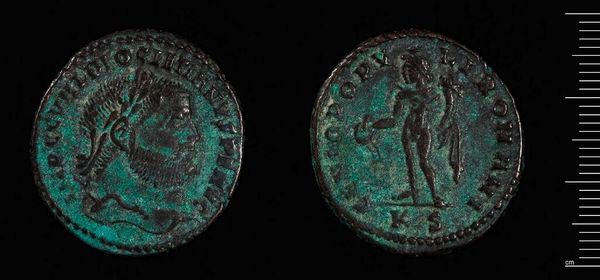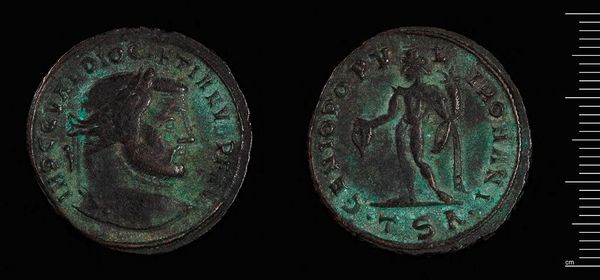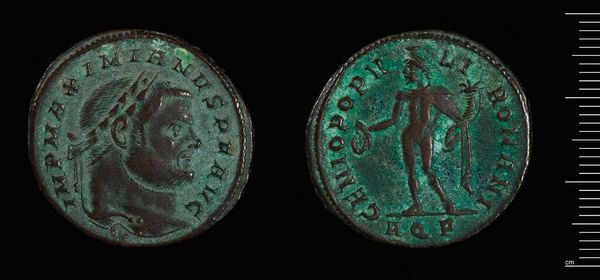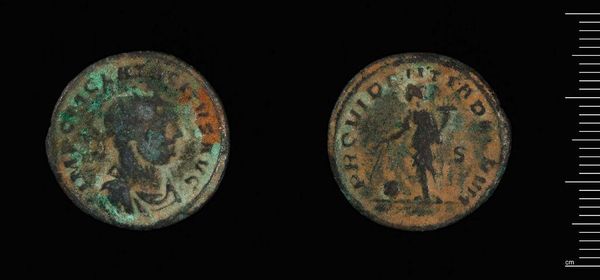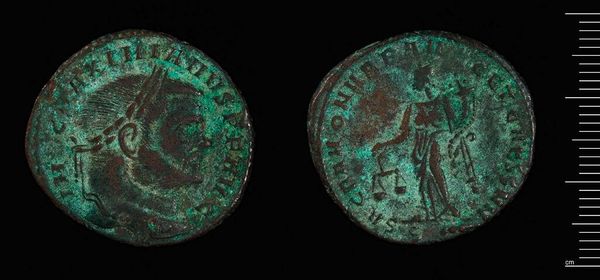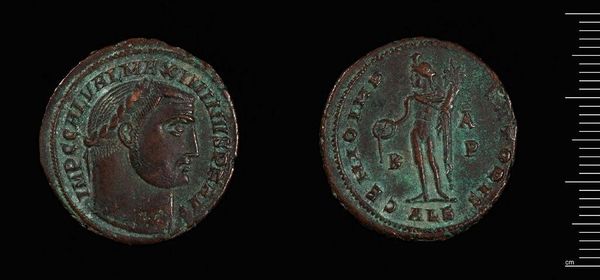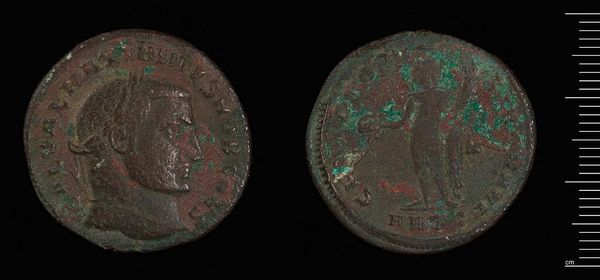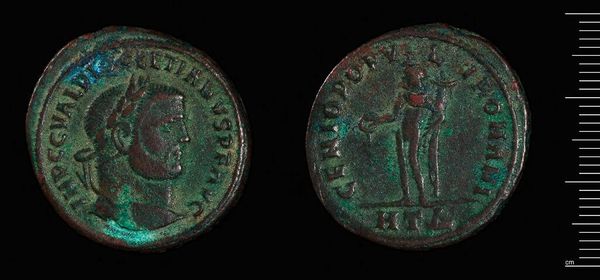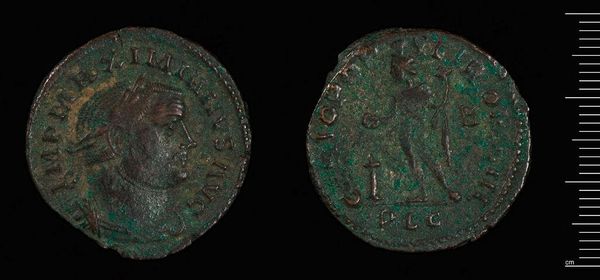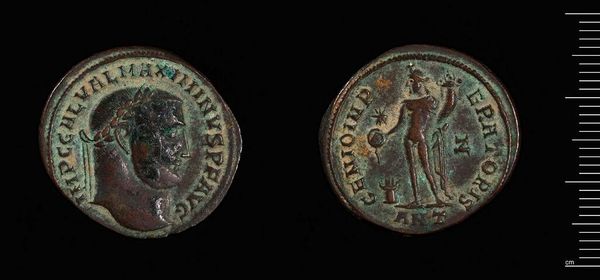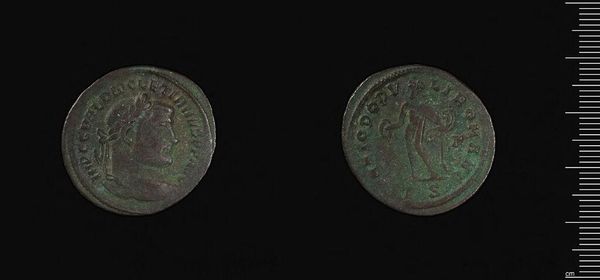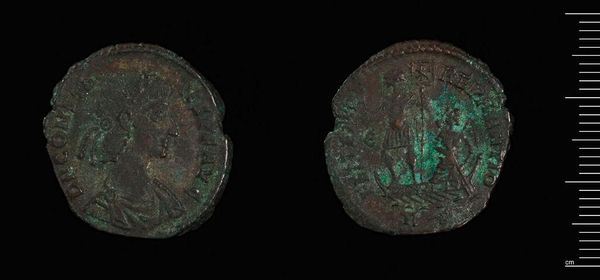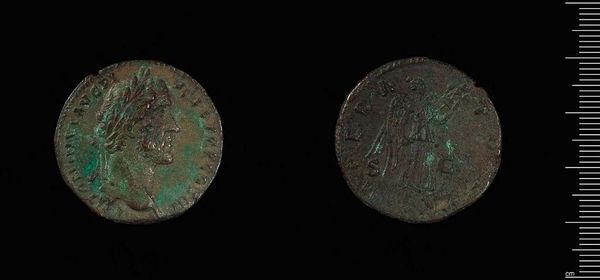
Dimensions: 9.72 g
Copyright: CC0 1.0
Curator: Here we have a Follis of Antioch, attributed to Constantius I Chlorus, currently residing in the Harvard Art Museums. It weighs approximately 9.72 grams. Editor: Its verdigris patina evokes a sense of temporal depth. It feels like holding a fragment of history, worn smooth by time and trade. Curator: Indeed. The coin’s imagery, though weathered, presents Constantius I on one side and, likely, a figure representing Antioch on the reverse. These are powerful symbols of imperial authority. Editor: The choice of Antioch is interesting. It was a crucial administrative and economic center, wasn't it? This coin probably helped to solidify the emperor’s presence and control in that region. Curator: Precisely. Even the act of minting and circulating coinage was a direct assertion of imperial power and a manipulation of social order. Editor: Contemplating what passed through hands, what power dynamics it represented... coins like these are small windows into ancient social structures. Curator: Yes, they reflect the values and authority that shaped the era. Editor: It is amazing how something so small can carry so much meaning.
Comments
No comments
Be the first to comment and join the conversation on the ultimate creative platform.
